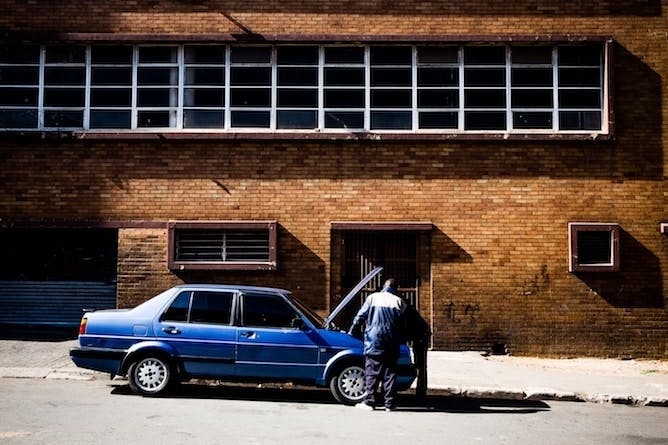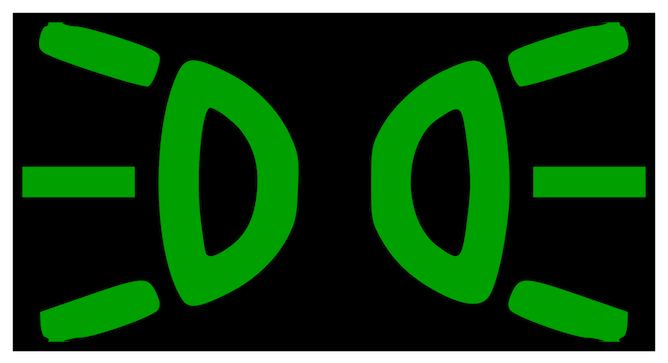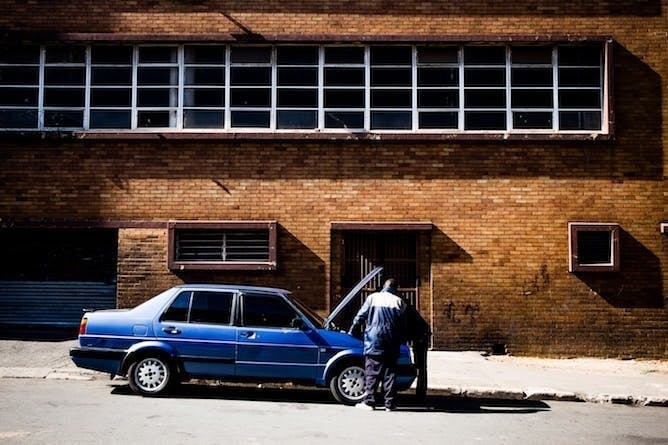
Ah, weather. The nation's favourite topic. But when the sky's looking grim, life still goes on—and so do our journeys. Unfortunately, dull weather can compromise our driving—in particular, that all-important ability: to see and be seen.
Here's where using your sidelights comes in. It’s crucial that you know exactly how to light your car responsibly and legally, whatever's happening around beyond your windscreen. There are, of course, headlights. You’re probably well aware of their effectiveness in helping you see through the gloom. But are you so well-versed in your knowledge of sidelights?
Whether you’re looking to answer common questions in your upcoming theory test, or are after some practical driving tips, we’ll explain exactly how to use your lights to get safely from A to B—and when to keep them on, even though you’re parked and out of the car.
Sidelights: what are they and how are they different from headlights?
Sidelights (sometimes called parking lights) are positioned on the four corners of your car.
At the front, they are usually contained in the same unit as your normal headlights. When illuminated, they emit a small white light. They’re also connected to some of the rear lights; when you turn them on, red tail lights on each side will light up, and so will your back number plate.
The amount of light sidelights produce is much dimmer than that of other lights on your car. That’s because they aren’t designed to illuminate the road ahead of you in quite the same way as your dipped headlights or full beams. Instead, they help to keep you visible to other road users.
They also use much less power than your headlights—which comes in handy, as we explore when and how they should be used.
Dashboard symbol

When you turn them on—usually with a twist of one of the indicator stalks or by turning a separate dial—you should see the sidelight symbol light up on your dashboard. This usually consists of two semi-circular type shapes in mirror image, each emitting light beams.
When should I use my sidelights?
Although they won’t help you see much further along the road ahead, sidelights have other, very important purposes.
1. To keep yourself visible
Sidelights might be small, but they are mightily effective for helping other drivers to spot you. They’re useful in the middle ground between great visibility and struggling to see.
So, when it’s not dark enough, or poor enough weather, to warrant headlights, using your sidelights still helps you remain visible to others. This is particularly important in helping other road users judge how far they are away from you, how fast you’re travelling and what type of vehicle you’re driving.
Having one on each corner helps drivers to gauge how wide your vehicle is. It shows them that you’re in a car—rather than, say, on a motorbike. That way, oncoming vehicles can give you the right amount of space as they pass you, and vehicles behind you can work out whether or not it’s safe to overtake.
Basically, they're perfect for dull, cloudy days, which—let's face it—are pretty common here in the UK.
2. As parking lights
You should always turn your headlights off when you’re parked, in order to avoid dazzling other drivers. But it’s a different story when it comes to sidelights.
In fact, one of their main purposes is for when you’re parking at night. That's why, in some countries, they are known as parking lights, or parking lamps. They help others to see your vehicle when it’s dark, so that it’s less likely that anyone will crash into you. The Road Vehicle Lighting Regulations of 1989 tell us that parking without leaving your sidelights on can actually be illegal.
Chances are you won’t have seen too many cars do this, though, because the rule only applies in specific situations. You are required by law to keep your parking lights on if you’re parking:
- between sunset and sunrise
- on a road or lay-by with a speed limit of over 30 mph, and
- are not parked within a designated parking space
For instance, if you’re parked by the side of the road on a country road, where the national speed limit dictates a maximum speed of 60 mph, then you must make sure your car is illuminated while it’s dark. Not doing so can lead to a fine.
3. As a backup
Driving in the dark with faulty headlights is against the law, but there’s nothing much you can do if you’re already driving and your headlight bulb suddenly blows or stops working.
In this situation, your sidelights are handy as a backup. Again, a single working headlight might fool drivers into thinking you’re a motorbike. Add in sidelights, and it’ll be much more obvious how wide your vehicle really is.
Of course, they aren’t going to give you huge amounts of visibility, but they’ll help keep you safe as you travel to your destination, where you can hopefully get the headlight replaced. Not ideal, but definitely better than nothing.
FAQs
1. Won’t I get a flat battery if I leave my sidelights on all night?

Sidelights are designed to be used overnight—so it would be pretty rubbish if they drained your battery! Thankfully, they have a very low wattage. That enables you to leave them on for several hours, without having to jumpstart your car afterwards.
To minimise any risk of getting a flat battery, you should try to turn off your sidelights in the morning. Then, as soon as you start your engine again, it will automatically begin recharging your battery.
So, as long as you’re not leaving them on night after night, without driving your car in between, then the chances are that you’ll be just fine.
2. Is it legal to drive on sidelights at night?
You are allowed to drive on your sidelights at night, but only if you're travelling on a well-lit road with a maximum speed limit of 30 mph.
However, you’ll still benefit from using your headlights in such circumstances, so we'd always recommend using them instead. Anyway, why create unnecessary extra work for yourself, switching back and forth?
3. If I have Daytime Running Lights, do I still need to use my sidelights?
Lots of cars nowadays (any new model since 2011) are fitted with Daytime Running Lights (DRLs), so it’s likely that the car in which you learn to drive will benefit from them.
DRLs are similar to sidelights in that they are low-wattage and their purpose is to help increase your vehicle’s visibility to other road users. However, they turn on automatically when your engine is running. They are also brighter than sidelights, and dim or turn off when your headlights are on, to prevent dazzling other drivers.
If your car is fitted with DRLs, you should still use your sidelights as we’ve described above; they are more suitable for dull weather. That's mostly because, unlike DRLs, they also illuminate your tail lights, which helps other road users see you.
4. Do you need sidelights to pass an MOT?
Your sidelights must be unobscured and in good working order to pass your MOT. All four lights must come on, without much delay, from an easily accessible switch.
For any of your car's lights to remain effective, you will need to be clean them regularly—particularly when driving in winter, when mud and grime from the roads are likely to splash up your car.
Check that your parking lights work by turning them on, then walking around the car to see that they are fully illuminated.
Make sure you're confident in other common driving situations, like getting onto motorways and meeting emergency services vehicles.
Subscribe for driving advice, offers & more
We'd love to let you know about our courses, news and offers via email. You may unsubscribe at any time.
Star Genie Limited trading as PassMeFast. Company number 10093359
Copyright © 2024 owned by Star Genie Limited
PassMeFast, Blue Tower, MediaCityUK, Salford, M50 2ST
